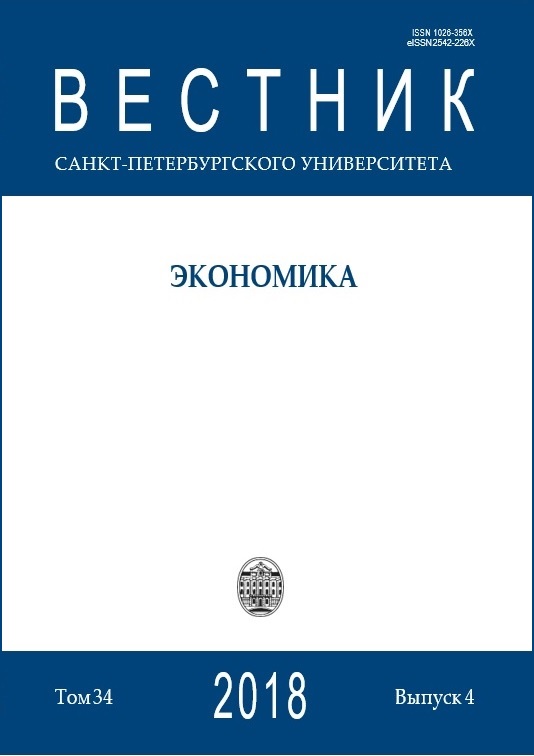Measuring inflation expectations: Traditional and innovative approaches
DOI:
https://doi.org/10.21638/spbu05.2018.403Abstract
sociological surveys; stock market indicators; econometric (mathematical) models; methods of big data research. It is noted that the coexistence of these four groups is a consequence of two trends of the last decades: the presence of two lines of economic tools development associ-ated with the improvement of traditional methods and the creation of completely new analytical approaches for processing big data. The transformation of the economy into engineering (technical) science with its inherent problem of instrumental pluralism. Within the frame-work of sociological surveys, three groups of respondents were considered — population, entrepreneurs and financiersexperts. Market indices of inflation expectations contain a kind of regulatory conflict, the essence of which is that the monetary failures of one Agency (Central Bank) are covered by another Agency (Ministry of Finance) and thus generate unaccounted endogenous shocks. We consider econometric models that include three types-the concept of “back-looking” and “forward-looking” inflation expectations, as well as the concept of the Phillips curve. It is proved that econometric models are characterized by extremely low sus-ceptibility of “black swans” and primitive representation of the mechanism of inflationary expectations formation, which makes this approach the least promising. Among the newest methods of measuring inflation expectations considered big data-technologies that use opera-tional data of the Internet environment and social networks. It is concluded that this class of methods is the most promising and in the future is able in its importance and popularity to come to the first place. The authors substantiate the thesis about the impending reshuffle of the popularity of the four types of inflation expectations estimation methods.
Keywords:
inflation, inflation expectations, sociological research, econometrics, big data, market index
Downloads
References
Translation of references in Russian into English
Downloads
Published
How to Cite
Issue
Section
License
Articles of the St Petersburg University Journal of Economic Studies are open access distributed under the terms of the License Agreement with Saint Petersburg State University, which permits to the authors unrestricted distribution and self-archiving free of charge.






